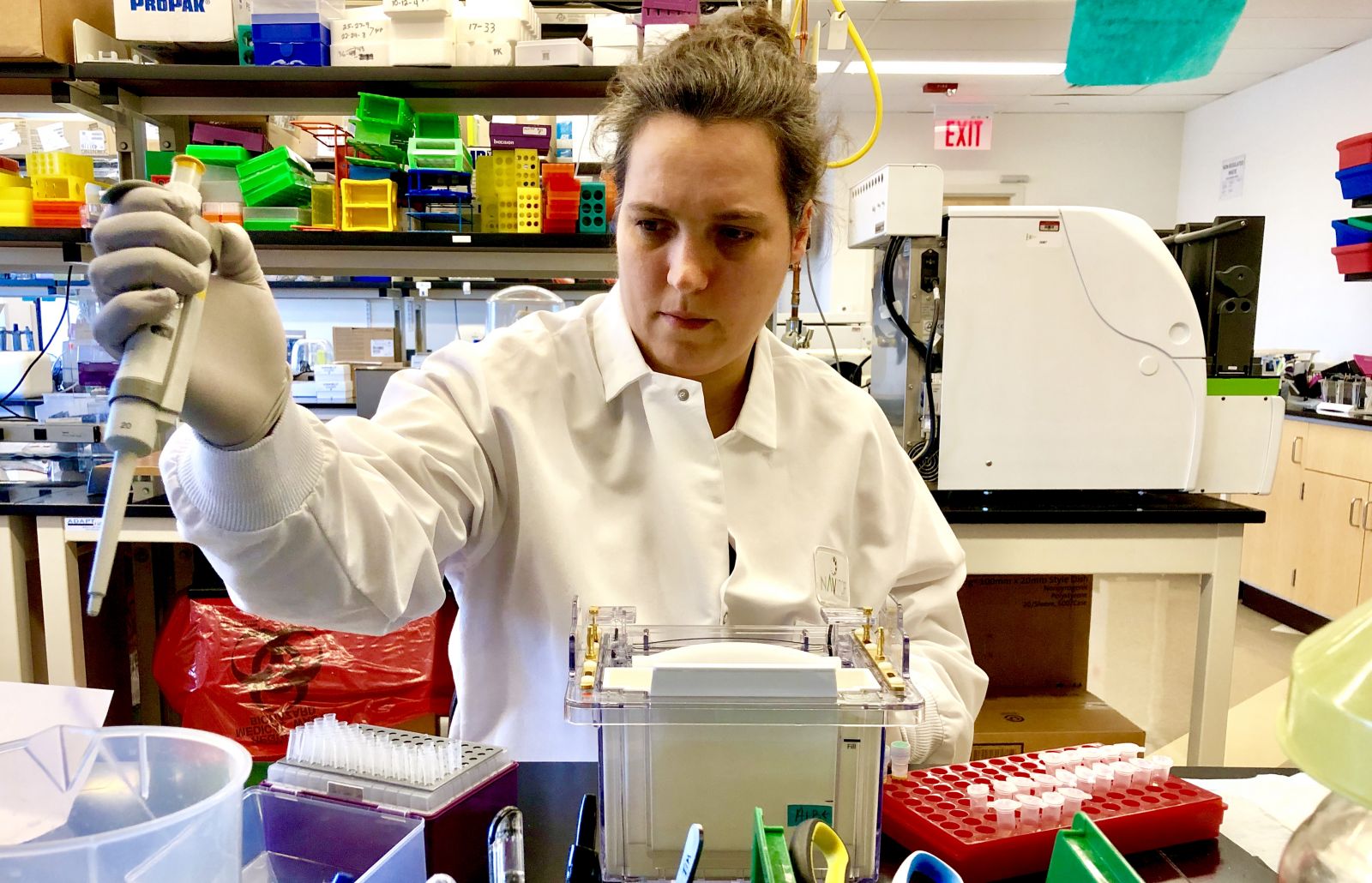A potential therapy for treatment-resistant depression
There is a potential therapy on the horizon for people suffering from treatment-resistant depression thanks to a small biotech firm’s discovery of a molecule linked to cell function in the brain.
By Colleen MacPhersonA woman jumping with excitement on a walking trail.
Navitor Pharmaceuticals, based in Cambridge, Massachusetts, used the Canadian Light Source at the University of Saskatchewan to visualize the interactions of the NV-5138 molecule in the process that controls the ability of brain cells to sense and respond to nutrients.

Their work centers on the mTORC1 pathway, the master regulator of cell metabolism and renewal in the brain and a key contributor to many diseases.
“Think of it almost like a thermostat that needs to be turned up or turned down to achieve metabolic balance,” said Eddine Saiah, Navitor’s Chief Research Officer.
“In a normal setting, every time you eat a meal rich in protein, it activates mTORC1, but in a disease setting, mTORC1 can be dysregulated for different reasons.”
When mTORC1 activity is too high, the result can be age-related conditions like kidney disease. Conversely, when it is too low, depression and poor cognitive function can occur because cells are short on the nutrients they need to thrive.
Dr. Saiah said, “We’re interested in both sides of mTORC1 but what is really new is NV-5138,” which has shown benefits in activating or turning up mTORC1.
He added that the first clinical trials with an oral administration of NV-5138 “showed a favorable profile in terms of absorption and safety” and the next step in clinical testing is underway in patients with treatment-resistant depression.
One of the most exciting aspects of NV-5138 is its potential fast-acting characteristics. “Drugs currently on the market typically take six to eight weeks to be effective, but with NV-5138, we have seen positive effects in as little as 24 hours in preclinical models.”
By studying this brain chemistry, Navitor scientists hope to develop drugs that can help people to live longer and healthier lives.
Using crystallography techniques at the CLS, Navitor discovered that NV-5138 works by binding to and regulating sestrin2, a sensor that activates mTORC1. The molecule is now the company’s top drug candidate for treatment-resistant depression.
Their findings were featured in the Nature journal Scientific Reports.
Dr. Saiah remarked on the drug’s rapid progress so far but also cautioned it will be several years before it receives final regulatory approval.
“For us as a company, this is an example of our ability to harness novel findings and translate them into drugs that are helpful for patients.”
Sengupta, Shomit, Emilie Giaime, Sridhar Narayan, Seung Hahm, Jessica Howell, David o’Neill, George P. Vlasuk, and Eddine Saiah. "Discovery of NV-5138, the first selective Brain mTORC1 activator." Scientific reports 9, no. 1 (2019): 4107. DOI: 10.1038/s41598-019-40693-5.
For more information, contact:
Victoria Schramm
Communications Coordinator
Canadian Light Source
306-657-3516
victoria.schramm@lightsource.ca
